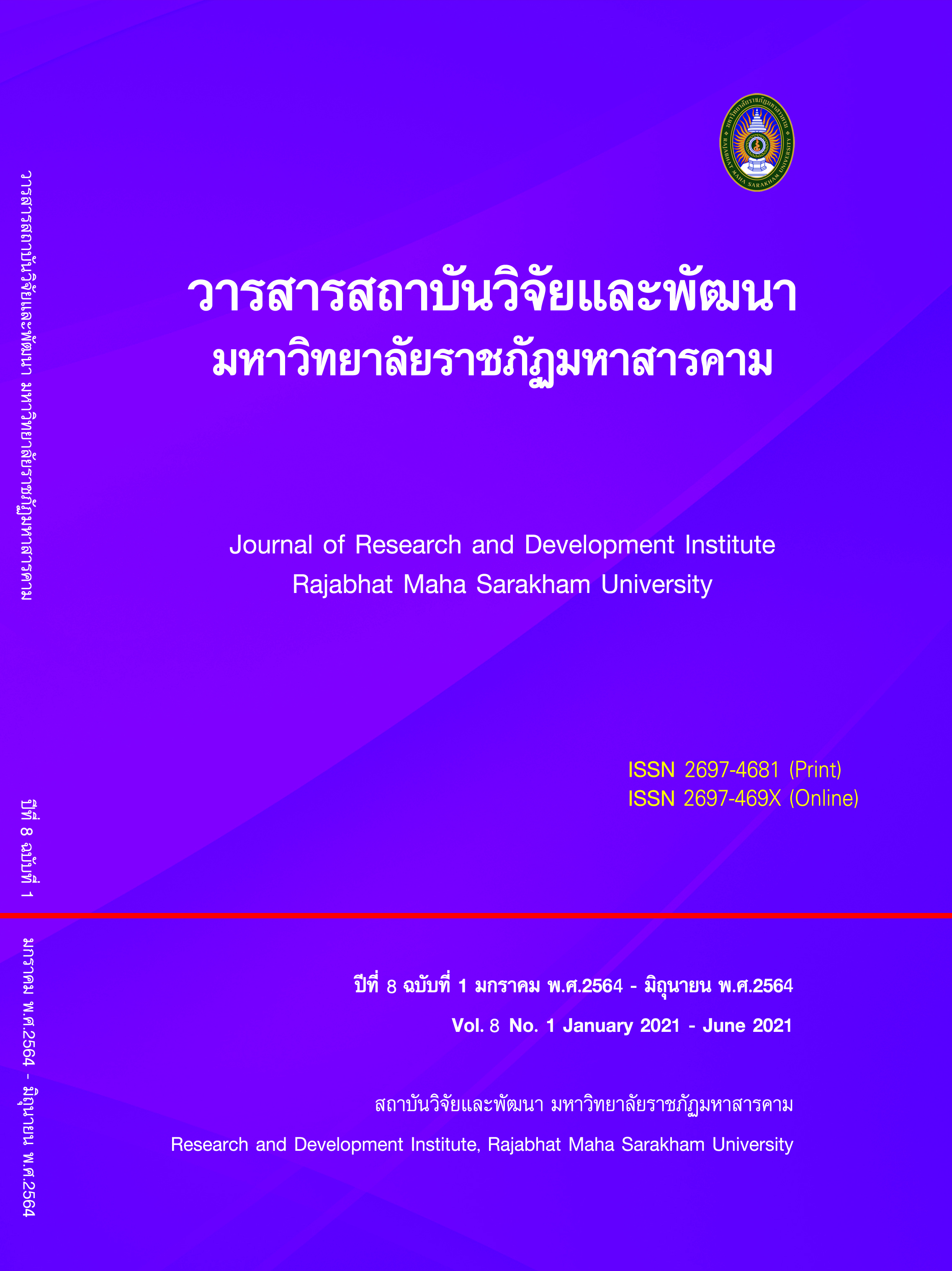Self-reliance Community economic development model of Ban Kok Daeng, Nikhom Kham Soi District, Mukdahan Province
Keywords:
Community development, self-reliance community economyAbstract
The purposes of this study were 1) to study the status quo, problems, and needs in developing the self-reliance community economy of Ban Kok Daeng, Nikhom Kham Soi District, Mukdahan Province; 2) to establish a guideline in improving the self-reliance community economy of Ban Kok Daeng; and, 3) to carry out a trial and assess the developmental guideline of the self-reliance community economy of Ban Kok Daeng. The research procedures were divided into 3 phases as follows: Phase 1: the researcher studied the status quo, problems, and needs in developing the self-reliance community economy by collecting data from 200 households, using both qualitative and quantitative methods in analyzing data. The collected data were categorized into themes and sub-themes and described the text using qualitative instruments while the quantitative method was used to analyze frequency, percentage, mean, and standard deviation. Phase 2: the researcher established a guideline to improve the self-reliance community economy of Ban Kok Daeng and brought the developed guideline into a brainstorming session with all stakeholders in a workshop to criticize the guideline and to find the final product of its approach. Phase 3: The guideline was tested to 35 households with a six-month trial period. The outcome finding was then analyzed by using t-test (dependent sample) analysis to compare the before-and-after use of the self-reliance community economy developmental guideline at Ban Kok Daeng, Nikhom Kham Soi District, Mukdahan Province.
The results showed that, firstly, there were 200 households or more precisely 592 people, divided into 311 males and 281 females. The main occupation was farmer receiving 23,000 baht/household/year. The problem found were the lack of knowledge in their occupation and support from the government sector, lack of part-time job training from the government, experiencing drought every year, lack of working capital and the community needed a guideline in living lives according to the sufficiency economy philosophy, which is expense reduction and revenue increase. The community was in need of these activities as follows: field trips to emulate the success from a role model, cultivation of organic vegetables, raising catfishes for sale, raising frogs for sale, raising local chickens, oyster mushroom farming, and raising ducks for sale.
Secondly, the activities to improve their quality of life were field trips to emulate the success of a role model, cultivation of organic vegetables, raising catfishes for sale, raising local chickens, and oyster mushroom farming.
Lastly, the results of the before-and-after use of the guidelines to develop the self-reliance community economy showed a statistically significant difference at .05 level. This can be concluded that the villagers’ expense was decreasing.
References
Ban Kok Daeng Community Plan. (2016). Ban Kok Daeng Community Plan, Kok Daeng Subdistrict, Nikhom Kham Soi District, Mukdahan Province. Mukdahan: Village Committee.
Jitman, C. (2009). Efficacy of Bioextract on Mushroom Cultivation. Master's Thesis: Sukhothai Thammathirat Open University.
Kongtanajaruanan, C. (2008). Lifestyle and quality of life regarding sufficiency economy philosophy of farmers in Nogmajab Village, Maefak Sub-district, San Sai District, Chiang Mai Province. Master's Thesis: Chiang Mai University.
Lapchit, S. (2009). An action research on the design and development of an integrated learning management system for basic people in the Surin way for a self-reliant community society. Surin: Office of Non-Formal and Informal Education, Surin Province.
Office of the National Economic and Social Development Board. (2016). National Economic and Social Development Plan No. 12 (2017-2021). [Online] http://www.nesdb.go.th/Default.aspx?tabid=395. [20 August 2016]
One Tambon One National Product Management Committee. (2004). Guide to the selection criteria for the best One Tambon One Thai Product (OTOP Product Champion), 2004. Bangkok: Department of Community Development, Ministry of Interior.
Phongphit, S. (2003). Community Economic Life Plan. Bangkok: Thai Wisdom Publishing House.
Phoowana, K. (2011). A development Model for the Well-being of Community: A Case Study of Ban Donmun, Kantarawichai District, Maha Sarakham Province. Doctor of Philosophy Thesis: Maha Sarakham Rajabhat University.
Roengchaiyaphum, A. (2006). Catfish culture in cages. Mae Hong Son: Na Bo Kham Sub-District Learning Center, Center for Non-formal Education and Informal Education, Mueang District, Mae Hong Son Province.
Thongklongsai, T. (2009). The Development Project of Frog Culture Method with Sulffi ciency Economy Philosophy. Master's Thesis: Rajamangala University of Technology Isan, Kalasin Campus.
Downloads
Published
How to Cite
Issue
Section
License
Copyright (c) 2021 Journal of Research and Development Institute Rajabhat Maha Sarakham University

This work is licensed under a Creative Commons Attribution-NonCommercial-NoDerivatives 4.0 International License.
Articles that are published are copyrighted by the authors of the articles







